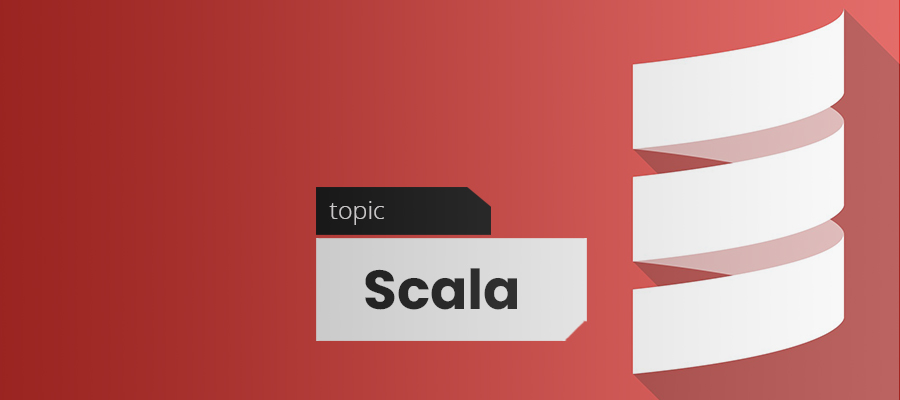Scala is a general-purpose programming language providing support for functional programming and a strong static type system. Designed to be concise, many of Scala’s design decisions aimed to address criticisms of Java.
Scala source code is intended to be compiled to Java bytecode, so that the resulting executable code runs on a Java virtual machine. Scala provides language interoperability with Java, so that libraries written in both languages may be referenced directly in Scala or Java code. Like Java, Scala is object-oriented, and uses a curly-brace syntax reminiscent of the C programming language. Unlike Java, Scala has many features of functional programming languages like Scheme, Standard ML and Haskell, including currying, type inference, immutability, lazy evaluation, and pattern matching. It also has an advanced type system supporting algebraic data types, covariance and contravariance, higher-order types (but not higher-rank types), and anonymous types. Other features of Scala not present in Java include operator overloading, optional parameters, named parameters, and raw strings. Conversely, a feature of Java not in Scala is checked exceptions, which have proved controversial.
Scala runs on the Java platform (Java virtual machine) and is compatible with existing Java programs. As Android applications are typically written in Java and translated from Java bytecode into Dalvik bytecode (which may be further translated to native machine code during installation) when packaged, Scala’s Java compatibility makes it well-suited to Android development, more so when a functional approach is preferred.
The reference Scala software distribution, including compiler and libraries, is released under a BSD license.
Scala.js is a Scala compiler that compiles to JavaScript, making it possible to write Scala programs that can run in web browsers.
Scala Native is a Scala compiler that targets the LLVM compiler infrastructure to create executable code that uses a lightweight managed runtime, which uses the Boehm garbage collector. The project is led by Denys Shabalin and had its first release, 0.1, on 14 March 2017. Development of Scala Native began in 2015 with a goal of being faster than just-in-time compilation for the JVM by eliminating the initial runtime compilation of code and also providing the ability to call native routines directly.
A reference Scala compiler targeting the .NET Framework and its Common Language Runtime was released in June 2004, but was officially dropped in 2012.
Scala has the same compiling model as Java and C#, namely separate compiling and dynamic class loading, so that Scala code can call Java libraries.
Scala’s operational characteristics are the same as Java’s. The Scala compiler generates byte code that is nearly identical to that generated by the Java compiler. In fact, Scala code can be decompiled to readable Java code, with the exception of certain constructor operations. To the Java virtual machine (JVM), Scala code and Java code are indistinguishable. The only difference is one extra runtime library, scala-library.jar.
Scala adds a large number of features compared with Java, and has some fundamental differences in its underlying model of expressions and types, which make the language theoretically cleaner and eliminate several corner cases in Java.
The most well-known open-source cluster-computing solution written in Scala is Apache Spark. Additionally, Apache Kafka, the publish–subscribe message queue popular with Spark and other stream processing technologies, is written in Scala.
There are several ways to test code in Scala. ScalaTest supports multiple testing styles and can integrate with Java-based testing frameworks. ScalaCheck is a library similar to Haskell’s QuickCheck. specs2 is a library for writing executable software specifications. ScalaMock provides support for testing high-order and curried functions. JUnit and TestNG are popular testing frameworks written in Java.
The above is a brief about Scala. Watch this space for more information on the latest trends in Technology.
